
Punica granatum var flora - Plant
(MRP Inclusive of all taxes)
- Shipping ₹79 for entire order
- Dispatch in 7 days
- Country of origin: India

(MRP Inclusive of all taxes)
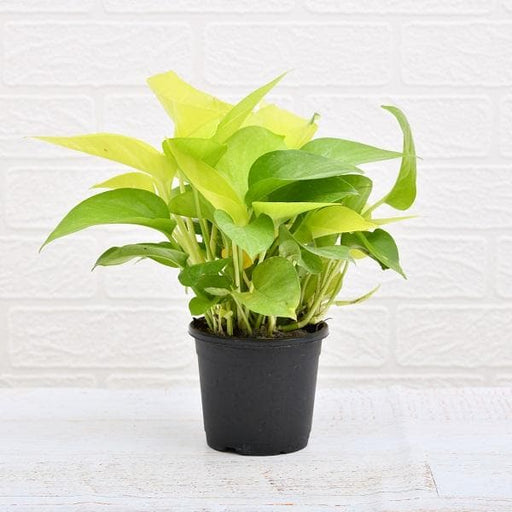 Save 29%
Save 29%
Air Purifier Money Plant with Pot The Air Purifier Money Plant, also known as Pothos or Epipremnum aureum, is a stunning indoor plant that...
View full details
 Save up to 15%
Save up to 15%
Peace Lily, Spathiphyllum - Plant The Peace Lily, scientifically known as Spathiphyllum, is a stunning houseplant celebrated for its elegant white...
View full details
 Save 25%
Save 25%
Jasminum sambac, Mogra, Arabian Jasmine - Plant Jasminum sambac, commonly known as Mogra or Arabian Jasmine, is a fragrant flowering plant...
View full details
 Save 18%
Save 18%
Combo Constituents Includes the Parijat Tree (Night-Flowering Jasmine), a culturally significant plant with fragrant flowers. Description The Pari...
View full details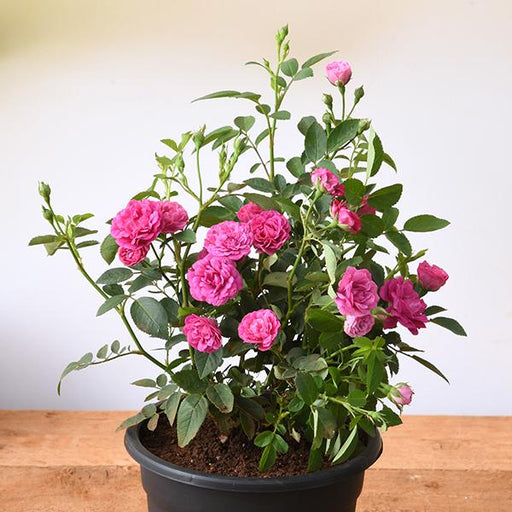
 Save 25%
Save 25%
Miniature Rose, Button Rose (Any Color) - Plant The Miniature Rose, also known as the Button Rose, is a charming and compact flowering plant that ...
View full details Save 25%
Save 25%
Damascus Rose, Scented Rose (Any Color) - Plant The Damascus Rose, also known as Rosa damascena, is a timeless symbol of beauty and romanc...
View full details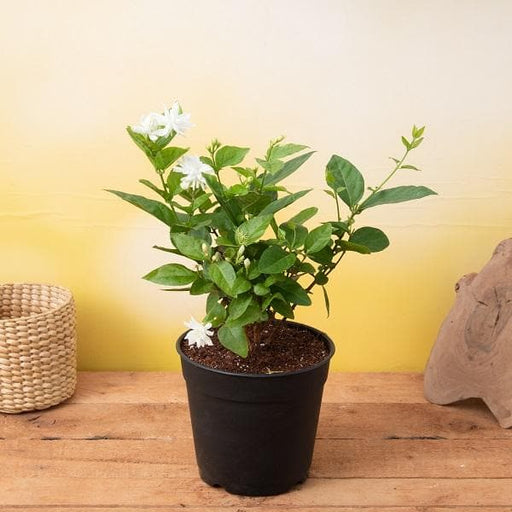
 Save 17%
Save 17%
Beautiful Fragrant Mogra, Arabian Jasmine Plant with Pot The Beautiful Fragrant Mogra, also known as Arabian Jasmine (Jasminum sambac), is...
View full details Save 15%
Save 15%
Pack of Vermicompost and Neem Cake for House Plants Transform your indoor garden with our premium Pack of Vermicompost and Neem Cake, spec...
View full details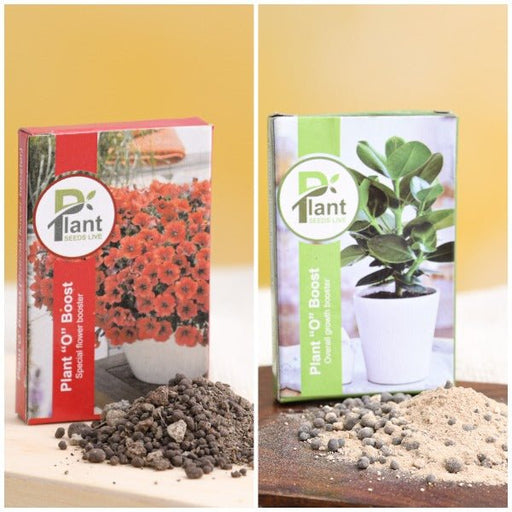
Pack of Plant Growth and Flower Boosters Unlock the full potential of your garden with our Pack of Plant Growth and Flower Boosters! This ...
View full details Save 38%
Save 38%
Combo of Jeevamrut and Neem Raksha for Easy Growth and Protection of Houseplants Transform your indoor garden with our exclusive combo of ...
View full details Save 22%
Save 22%
Plant Nutrients Kit (Pack of 16) for a Healthy Garden Transform your garden into a lush paradise with our Plant Nutrients Kit, featuring 1...
View full details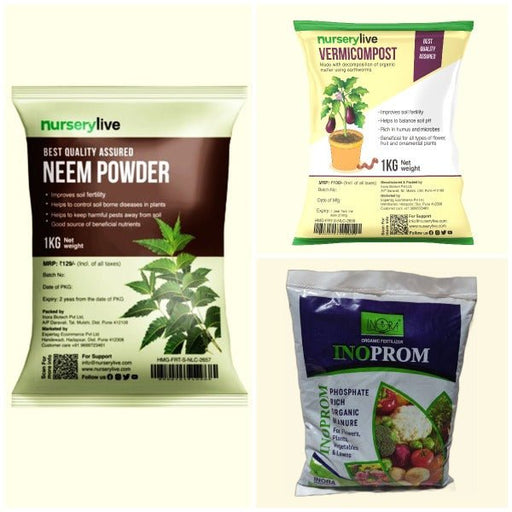 Save 16%
Save 16%
Combo of Top Plant Fertilizers Elevate your gardening game with our exclusive Combo of Top Plant Fertilizers, featuring two bags of premiu...
View full details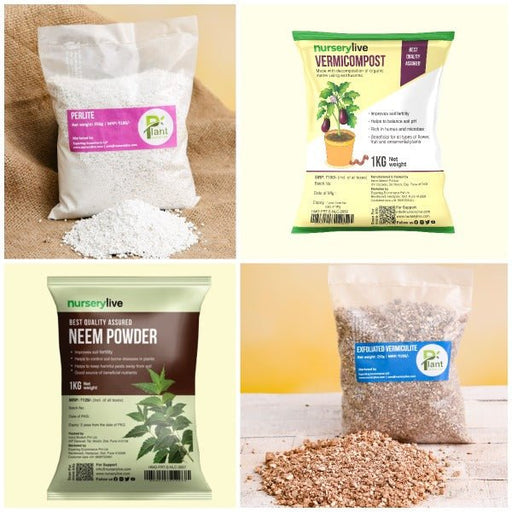 Save 24%
Save 24%
Pack of 4 Additives to Make Soil Healthy and Nutrient Rich Transform your garden into a thriving ecosystem with our Pack of 4 Additives de...
View full details Save 30%
Save 30%
Transform your gardening experience with our premium Combo of Perlite and Vermiculite. This unique blend is designed to enhance soil aeration and ...
View full details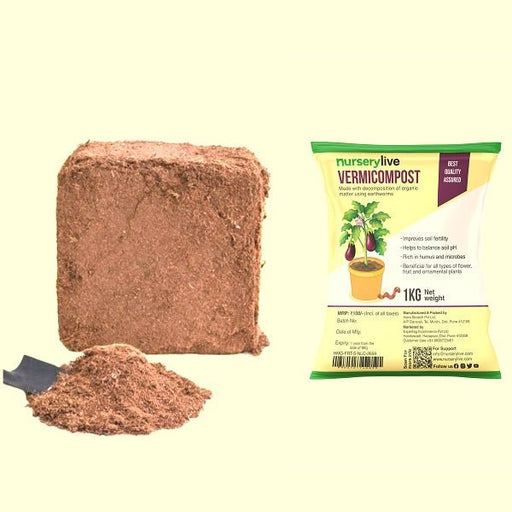 Save 27%
Save 27%
Combo of 2 Vermicompost and Cocopeat - Enrich Your Soil Naturally! Transform your garden into a thriving ecosystem with our Combo of 2 Ver...
View full details
 Save 35%
Save 35%
Best 6 Plants for Perfect Indoor Garden Transform your living space into a lush oasis with our curated collection of the Best 6 Plants for a...
View full details
 Save up to 50%
Save up to 50%
Mini Succulent Garden Pack Transform your space with our Mini Succulent Garden Pack, featuring a delightful collection of 4 any variety beautiful s...
View full details
 Save 30%
Save 30%
5 Best Fragrant Plants Transform your garden or indoor space into a fragrant paradise with our curated selection of the 5 Best Fragrant Plants. Th...
View full details
 Save 24%
Save 24%
Set of 2 Bonsai Looking Grafted Adeniums Transform your indoor or outdoor space with our exquisite Set of 2 Bonsai Looking Grafted Adenium...
View full details Save 45%
Save 45%
Top 4 Die Hard Succulents Pack Transform your indoor or outdoor space with our Top 4 Die Hard Succulents Pack, featuring a curated selecti...
View full details
 Save 30%
Save 30%
5 Best Indoor Plants Pack Transform your living space into a lush oasis with our '5 Best Indoor Plants Pack.' This carefully curated collection fe...
View full details
 Save 25%
Save 25%
Set of 4 Evergreen Air Purifier Plant Pack Transform your indoor space into a lush, green oasis with our Set of 4 Evergreen Air Purifier Pla...
View full details| SrNo | Item Name |
|---|---|
| 1 | Punica granatum var flora - Plant |
Punica granatum var. flora, commonly known as the flowering pomegranate, is a stunning ornamental plant that captivates with its vibrant, double flowers. This variety not only produces beautiful blooms but also bears the iconic pomegranate fruit, making it a dual-purpose addition to any garden. Native to the Mediterranean region, this hardy plant thrives in various climates, showcasing its adaptability and resilience.
What makes the flowering pomegranate special is its unique aesthetic appeal combined with its nutritional benefits. The bright red, layered petals attract pollinators, enhancing biodiversity in your garden. Additionally, the fruit is rich in antioxidants, vitamins, and minerals, making it a superfood that promotes health and wellness.
One of the standout features of Punica granatum var. flora is its ability to flourish in arid conditions, making it an excellent choice for sustainable gardening. Its deep root system allows it to access water from deeper soil layers, reducing the need for frequent irrigation and contributing positively to the environment.
If you think caring for a plant is as easy as watering a cactus, think again! Punica granatum, or the pomegranate tree, requires a bit of TLC. This diva of the plant world loves well-drained soil and plenty of sunshine. So, if you’re planning to grow one, make sure you’re ready to play the role of a devoted gardener. Remember, a happy Punica granatum is a fruitful one!
Who knew that growing a pomegranate tree could turn you into a health guru? These trees not only beautify your garden but also produce fruits packed with antioxidants, vitamins, and a splash of deliciousness. Imagine plucking fresh pomegranates and impressing your friends with your newfound superfood status. Your garden will be the talk of the town, and your health will thank you!
Want to multiply your pomegranate tree like rabbits? Propagation is the name of the game! You can do this through seeds or cuttings, but be prepared for a little patience. It’s like waiting for a Netflix series to drop its next season. With the right conditions, you’ll soon have a mini orchard of pomegranate trees, ready to take over your backyard!
Just like humans, pomegranate trees can catch a cold—or in their case, diseases. From fungal infections to pesky pests, these trees face their fair share of challenges. But fear not! With a little vigilance and some organic treatments, you can keep your tree healthy and thriving. After all, a healthy tree is a happy tree, and happy trees bear fruit!
Pruning your pomegranate tree is like giving it a stylish haircut. It’s essential for maintaining shape and encouraging fruit production. Don’t be afraid to snip away those unruly branches! Just remember, a little trim goes a long way. Your tree will thank you by showering you with juicy pomegranates, and you’ll feel like a gardening superstar.
If your pomegranate tree had a favorite vacation spot, it would be a sunny beach! These trees thrive in full sunlight, so make sure to plant them in a spot that gets at least six hours of direct sun daily. Think of it as giving your tree a sunbathing session. The more sun, the more fruit—it's a win-win!
Pomegranate trees are picky eaters when it comes to soil. They prefer well-drained, sandy loam that’s slightly acidic to neutral. Think of it as their gourmet meal. If you want your tree to flourish, make sure it’s not sitting in soggy soil—nobody likes a waterlogged dinner! A little soil prep can lead to a bountiful harvest.
Watering your pomegranate tree is like finding the perfect balance in a relationship. Too much water, and you’ll drown it; too little, and it’ll wither away. Aim for deep watering every couple of weeks, especially during dry spells. Your tree will appreciate the attention, and you’ll be rewarded with a cascade of luscious pomegranates.
Harvesting pomegranates is like a treasure hunt! Wait until the fruits are a deep red and slightly soft to the touch. Use pruning shears to snip them off, and be prepared for the juicy explosion of flavor. Just remember, patience is key—rushing the harvest is like trying to open a bottle of champagne before the party starts!
Every tree needs friends, and your pomegranate is no exception! Consider planting companion plants like herbs or flowers that attract beneficial insects. Not only will your garden look fabulous, but these companions can also help keep pests at bay. It’s like throwing a garden party where everyone gets along—what’s not to love?
Pomegranate trees are the sun-loving, warm-weather enthusiasts of the plant world. They thrive in USDA zones 8 to 10, where winters are mild and summers are hot. If you live in a cooler climate, consider container gardening so you can bring your tree indoors during frosty nights. After all, nobody wants a cold pomegranate!
Let’s face it—pomegranate trees are the show-offs of the garden. With their glossy leaves and vibrant fruits, they add a splash of color and elegance to any landscape. Whether you’re looking to impress your neighbors or just want a stunning focal point, planting a Punica granatum will elevate your garden game to new heights!
Punica granatum var flora, also known as the flowering pomegranate, is a delightful plant that boasts stunning blooms and delicious fruit. It’s like the diva of the garden, flaunting its vibrant flowers while promising a sweet reward. Perfect for those who want beauty and bounty in one fabulous package!
Caring for this beauty is a piece of cake! Provide well-drained soil, plenty of sunlight, and moderate watering. Think of it as a sunbather who enjoys a refreshing drink now and then. Just avoid soggy feet, and your flowering pomegranate will thrive like a star on the red carpet!
Get ready for a floral fiesta! Punica granatum var flora typically blooms in late spring to early summer. Those vibrant flowers will make your garden look like a party, attracting pollinators and envious neighbors alike. Just sit back, relax, and enjoy the show as nature puts on its best performance!
Absolutely! Punica granatum var flora can be a fabulous indoor plant if given enough sunlight. Just treat it like a houseguest who loves the sun—place it near a bright window and keep it cozy. With the right care, you’ll have a blooming beauty that brightens up your living space!
This diva prefers well-draining soil that’s rich in organic matter. Think of it as a luxurious spa treatment for your plant! A mix of potting soil and sand will do the trick, ensuring it has the perfect balance of moisture and drainage. Your flowering pomegranate will thank you with vibrant blooms!
Watering is an art, not a science! Generally, you should water when the top inch of soil feels dry. It’s like giving your plant a refreshing drink after a long day. Just remember, too much water can lead to root rot—so keep it balanced, and your plant will thrive like a superstar!
Not really! Punica granatum var flora prefers to bask in warm weather and is not a fan of frost. If you live in a chilly area, consider bringing it indoors during winter or providing some cozy protection. Think of it as wrapping your plant in a warm blanket—because who likes being cold
This beauty can reach heights of 3 to 10 feet, depending on its environment and care. It’s like the overachiever of the plant world, growing tall and proud! With proper pruning, you can keep it at a manageable height while still enjoying those stunning blooms. Size matters, but so does style!
Yes, you can! Propagation is like creating mini versions of your favorite plant. You can do this through cuttings or seeds. Just remember, patience is key—good things come to those who wait. Soon enough, you’ll have a whole family of flowering pomegranates to show off!
Keep an eye out for aphids, spider mites, and scale insects. These little critters can be quite the party crashers! Regularly inspect your plant and use insecticidal soap or neem oil if needed. With a little vigilance, you can keep your flowering pomegranate pest-free and fabulous!
Absolutely! The vibrant flowers of Punica granatum var flora are like a beacon for bees and butterflies. They’ll flock to your garden, turning it into a buzzing paradise. So, if you want to be the host of the best pollinator party in town, this plant is your ticket to floral fame!